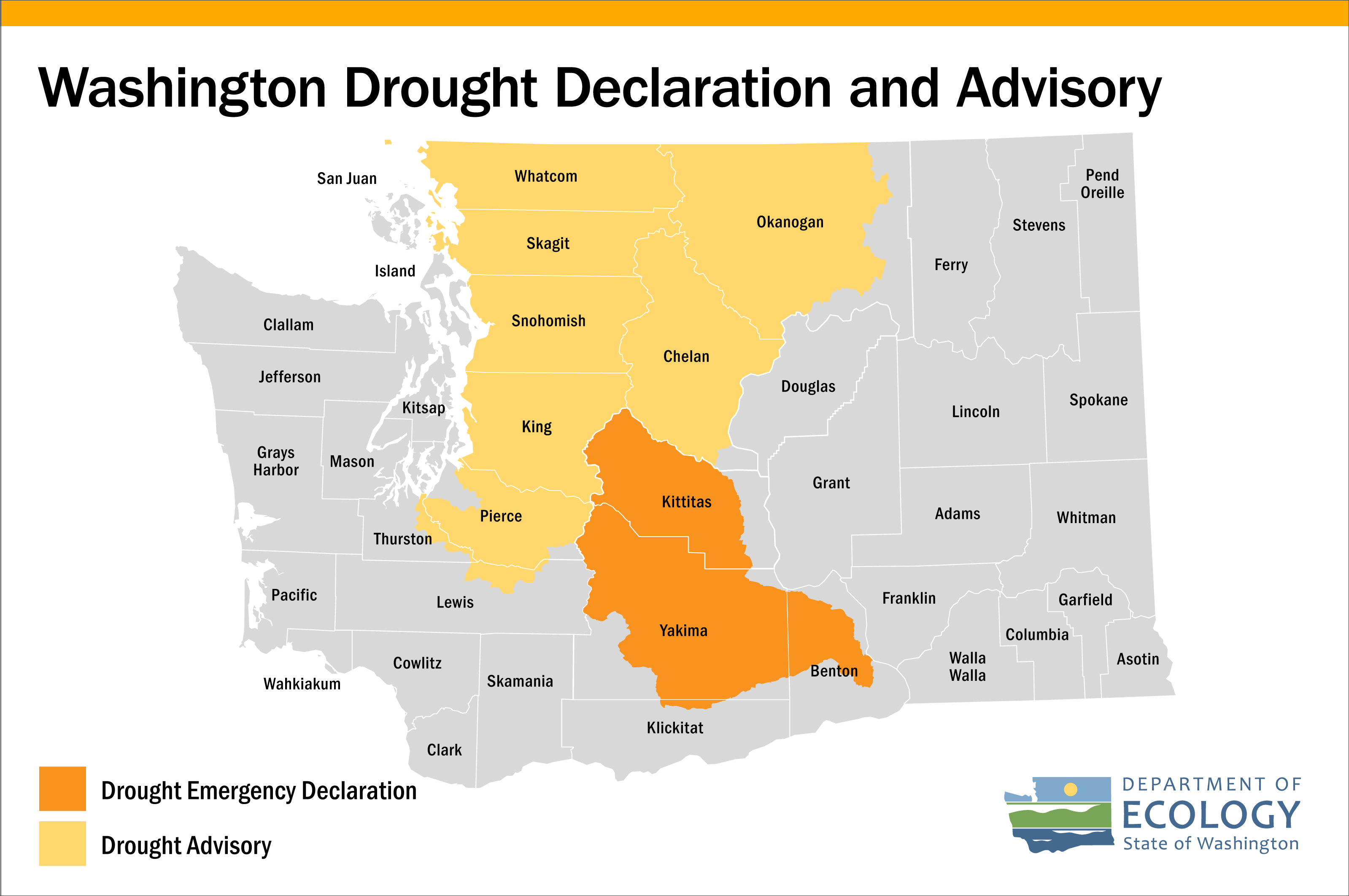Drought conditions continue in eastern Washington and may be developing in the northern and central parts of the state already under drought advisory conditions. According to experts at the recent meeting of the Water Supply Availability Committee, existing drought conditions are likely to persist through the summer. In some areas, conditions may worsen. The WSAC is a group of experts from various state and federal agencies who discuss factors affecting water supply in Washington in monthly meetings.
The water year so far
Temperatures were slightly above normal on average statewide this water year (measured October through April) ranking as the 21st warmest since 1895. However, conditions have worsened since January.
Precipitation has been near normal, but that is largely due to a wet fall. Precipitation since January has been 78% statewide. Some areas, including the seven counties currently under a drought advisory, had less than 75% of normal precipitation since January.
Average statewide temperatures in April were above normal and ranked at the 25th warmest on record. April precipitation was only 57% of normal, making it the 30th driest April on record. The odds are high that May will have above normal temperatures for eastern Washington. From June through August temperatures are expected to be warmer and drier than normal.
Snowpack
Statewide, snowpack is 69% of normal, though there is a lot of variability between different regions. Snow drought conditions continue to worsen in the central and northern Cascade Mountains. In some areas, near-record snowmelt caused above normal streamflows in March and April. But because so much of the snow is gone now, river forecasts for May through September are significantly lower than normal.
Developing drought conditions
The drought declared for parts of Kittitas, Yakima and Benton counties on April 8 is still in effect. In Washington, drought is declared when there is less than 75% of normal water supply and there is the potential for undue hardship to people or the environment. Water supply can apply to any number of conditions including a lack of rain, a lack of snow, soil moisture deficits or insufficient water in storage.
Declaring drought allows Ecology to expedite emergency water right transfers and to award grants to public entities impacted by drought conditions. A drought advisory is a public awareness and readiness tool that indicates drought conditions may develop. There is a high likelihood that the seven counties placed in a drought advisory on April 8 could develop drought conditions later this spring. Ecology is paying especially close attention to developing conditions in the north and central Cascade Mountains.

